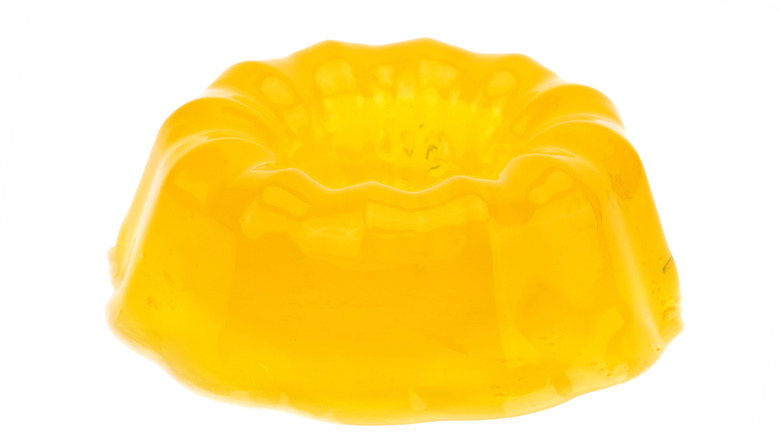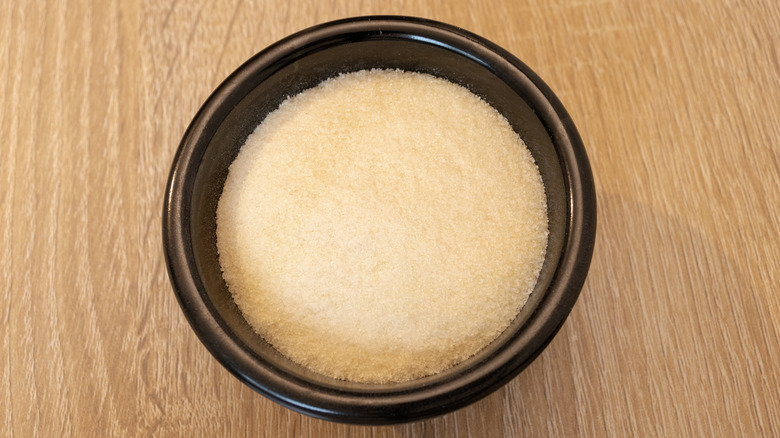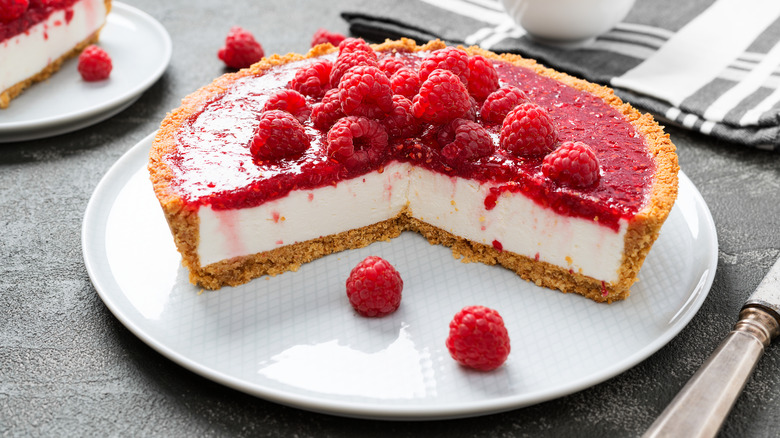What You Need To Look Out For When Buying Gelatin
Whether you are making Jell-O shots, marshmallows, parfaits, or a molded salad, gelatin is an important ingredient. Many people have had the unhappy experience of unmolding a salad (or taking a shot) only to find that the mixture did not solidify properly, and you're left with a mess on your hands. And the counter, and the floor. The problem? Probably the gelatin.
Gelatin is made from collagen, a protein that is in the connective tissue of animals (skin, bones, tendons, ligaments, and all that stuff). Gelatin comes out of those, er, ingredients when heated in water. Then it is purified and filtered and powdered or formed into sheets. It's definitely not a vegetarian or vegan ingredient. According to Scientific American, the protein molecules in gelatin move around when heated in liquid. Those molecules form a web when cooled, trapping the liquid into something called a colloidal gel.
But as it turns out, not all gelatin is equal. What do you need to look out for when buying gelatin?
Know the bloom strength
The important thing to know when buying gelatin is its bloom strength. "Bloom" is also the term used when gelatin is softened in water. But the two aren't the same. Bloom strength, according to the National Museum of American History, is named after Oscar T. Bloom who invented the Gelometer for measuring the strength of gelatin. And different gelatins have different bloom strengths.
The bloom value (or strength) for gelatin is between 30 and 300 bloom, per Science Direct. A higher number, naturally enough, means more strength. David Lebovitz says that Knox gelatin is 225 bloom, while sheet gelatin, which looks like a fairy tale castle window, is about 200. Modernist Pantry has more info about sheet gelatin, which comes in different colors according to its weight. Custom Collagen says that the bloom strength used to make Jell-O is about 250.
If you are making any food or "drink" with gelatin, using those products is a pretty safe bet.
The best gelatin-based dishes
The familiar Jell-O product is made of gelatin and sugar and food coloring and artificial flavor. Sheet gelatin is a little harder to find in supermarkets in the United States, although it's easily found online. Then there's plain gelatin, which is used in cooking and baking. it makes great salads (per Southern Living), desserts, and fruit molds. You can also use it to make the aforementioned Jell-O shots.
To use gelatin, it's best to follow the recipe. For plain gelatin, it is usually softened in water, then heated until the grainy semi-solid dissolves, per King Arthur Baking Company. For flavored and sweetened gelatin products, it's usually mixed with boiling water to dissolve the sugar and gelatin, according to Jell-O.
For fun with your kids, try making little figurines using Jell-O Play packages. For an elegant dessert, try Polish cold cheesecake, made with plain gelatin and cream cheese, or champagne gelee with raspberries, which is beautiful and delicious. Make limoncello Jell-O shots for a spring or summer party, and for a blast from the past, try orange creamsicle Jell-O mold.


